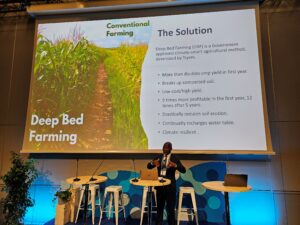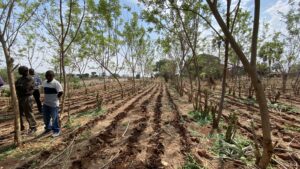Building resilience in Sweden’s ports
Ports are the lifelines of Sweden – yet increasingly exposed to climate and security risks. A new national initiative, led by the Stockholm Environment Institute (SEI) with SIWI as a key partner, aims to strengthen preparedness and climate resilience in Sweden’s port regions.
Strengthening preparedness in a changing world
Sweden’s long coastline makes the country unusually dependent on its ports – almost 90 percent of imports and exports pass through them. But as climate change accelerates and geopolitical tensions grow, these vital hubs face new and complex risks. Flooding, rising sea levels, and storm surges can threaten operations and infrastructure, while disruptions can ripple through entire supply chains and critical services.
To meet these challenges, the Swedish Transport Administration has launched the three-year project Increased preparedness for Swedish port regions, led by SEI. The initiative brings together experts from SEI, SIWI, the Research Institutes of Sweden (RISE), the Swedish Maritime Administration, and the Marine Knowledge Centre in Malmö, alongside port authorities, municipalities, and national agencies.
SIWI’s contribution
SIWI has carried out a baseline analysis of climate adaptation efforts in the Copenhagen–Malmö, Trelleborg, and Visby port regions. The study, led by SIWI’s Malin Lundberg Ingemarsson, PhD, identifies both progress and pressing gaps in current approaches.
‘Ports are highly exposed to changes in the hydrological cycle, rising sea levels, and extreme weather,’ says Lundberg Ingemarsson. ‘To strengthen their resilience, we need integrated approaches that connect climate adaptation, water management, and infrastructure planning. Our findings show that stronger collaboration, improved access to data, and new financial and legal incentives are urgently needed.’
Tools for long-term resilience
The project will develop a new climate service to support port regions in preparing climate adaptation plans and prioritizing investments. It will also assess potential ‘domino effects’, where climate impacts in one area can disrupt critical infrastructure or supply chains elsewhere.
By combining climate science, risk assessment, and systems thinking, the project seeks to provide decision-makers with practical tools that balance multiple goals – from safety and socio-economic development to environmental sustainability.
Connecting water, climate, and security
Ports are no longer seen only as transport hubs, but increasingly as energy nodes and key assets for national preparedness. The project therefore bridges climate adaptation and security planning, helping Swedish ports respond to evolving operational demands.
Through its involvement, SIWI contributes water-related expertise and systems perspectives essential for understanding how hydrological changes affect infrastructure and resilience. The insights gained will also inform broader efforts to strengthen water-related climate adaptation and risk management across Sweden and beyond.
Learn more about the project and its partners
This article draws on a piece originally published in Swedish on SEI’s website.










